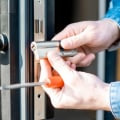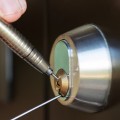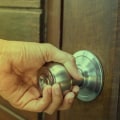The most basic configuration is only two tools, a tension wrench and a feeler probe. Use the tension wrench to apply tension to the lock and then the prong to secure each individual locking pin while maintaining tension. The basic latch lock design has been in use since 4000 BC. Of course, it has become more complex over the millennia.
The design used in most cylinder locks, such as the one on the front door, has existed since 1861 and hasn't changed much. Basically, most of the world uses technology that has existed for a century and a half to keep its most precious possessions safe and secure. From this news, the answer would be no. In practice, locksmiths who need to know how to pick locks probably know how to do it.
But it's not as useful a skill as you might think in locksmithing. Time is money, so the only choice you make is the one that is profitable and worthwhile. Not all locksmiths do lockouts either, and some locksmiths would never have a chance to pick locks, so the only way to do that is if they did it on their own for practice or fun. Again, it depends on the type of locksmith.
Some locksmiths are very skilled at decoding car locks, while others never touch cars. Some focus on institutional security and have extensive knowledge of the master key and complex security systems, while others never see such things. Others lock out cars and residences all the time, while others may never leave their store. Also, locksmiths are not infallible when it comes to security, a locksmith near me was surprised when I pointed out to him that the lock on his shop door could easily be overlooked with a subway card.
None of the locksmiths I deal with lock picks. It is cheaper for the customer to drill it and install a new core or use a bolt cutter and give him a new lock. Not all doctors perform surgeries. Speaking of residential locksmiths, the short answer is no, but that doesn't mean that any locksmith who can't or can't be shady.
In addition, the actuating pins are pushed out of the cap and also remain aligned with the cutting line. It is at this time, when the space between the pins of the key and the pins of the conductor is exactly the same as that of the cutting line, that we can turn the key and unhook the lock. The vast majority of locksmith work could be classified as carpentry, metalwork and, in the case of multipoint mechanisms for PVC doors, mechanical. There is a misconception that the only people who can legally own lock picking tools are first responders or licensed locksmiths.
In essence, lock picking is simply the act of imitating the key by manipulating the pins in the same state they would be in if the correct key were inserted. By using the decoding key after opening the lock, the locksmith can cut a tubular key to the correct depth of the pin and thus avoid having to replace the lock. Most tubular lock picks come with a decoder that lets the locksmith know at what depths the pins broke the cutting plane. The decoding pick is a key that has been adapted so that the height of its notches can be changed, either by screwing them into the base of the blade or adjusting them from the handle while the key is in the lock.
If you've ever been out of your house or car, you know how annoying it is to stand there like a fool, waiting for someone to show up with a key or for a professional locksmith to arrive. Although lock picking may be associated with criminal intent, it is an essential skill for the legitimate locksmith profession, and law-abiding citizens also practice it as a useful skill to learn, or simply as a hobby (lock sport). Locksmiths have a wide range of potential skills, and lock picking is a skill they have in theory, but in practice, it varies greatly depending on the type of work they do. .



Leave Message